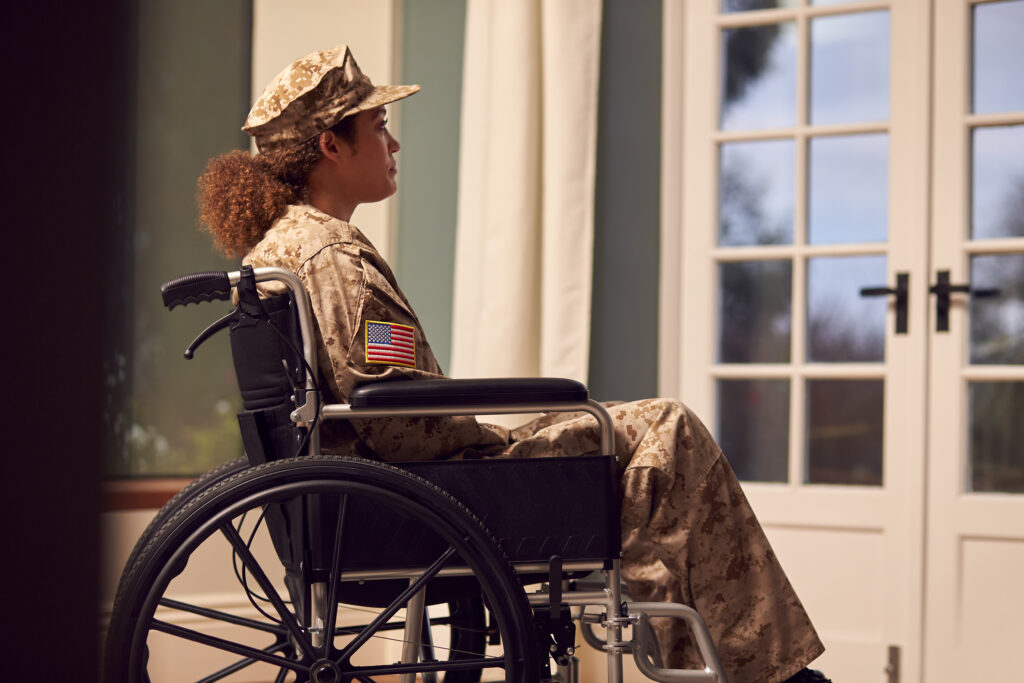
Coding Considerations for A New Chapter for Gulf War Veterans
Today is Veterans Day, so first I would like to thank those who have served or are currently serving in the military for their service
EDITOR’S NOTE: At this hour Laurie Johnson is at the Fort Lauderdale Airport awaiting a Southwest Airline flight that is expected to return her tonight to Pittsburgh, Pa.
BOCA RATON—Have you ever experienced preparations for a hurricane in a health information management (HIM) department? I just recently added this experience to my resume by working in south Florida as Hurricane Irma approached.
The hurricane is currently 700 miles from south Florida and has recorded sustained winds of 170 mph – it was a Category 5 on Thursday afternoon and now a Category 4 today. Gasoline is in precious supply, the traffic on I-95 is very heavy, the shelters in Miami-Dade County are getting full, there are mandatory evacuations, and bottled water was getting scarce even on Labor Day. Publix is closing its stores on Friday evening and airports are closing in Miami and Fort Lauderdale then as well. This is a scary storm.
In ICD-10-CM, exposure to a hurricane is identified with code X37.0-. This is an external cause code that is listed as a secondary code that will identify all the injuries associated with the hurricane. According to the Official Coding Guidelines for the Coding and Reporting of ICD-10-CM, external cause codes have no national requirement for reporting. The seventh characters of “A,” “D,” and “S” are available as seventh characters. The “A” indicates active management. The “D” indicates that the patient is completing follow-up or aftercare of any injury that occurred due to the hurricane, while “S” indicates that the injury is due to sequela of the injury. If you remember from my past articles, all injury codes will be found in Chapter 19 and begin with letters “S” and “T,” which I memorize by the terms “simply traumatic.” The current injuries will be reported before the external cause code (or the X code).
Here are my recommendations for hurricane preparedness:
HIM is the custodian of all patients’ protected health information (PHI). That duty cannot be forgotten, even in these times. That requirement is another reason the HIM department must be prepared well.
Please keep all people impacted by Irma in your thoughts in the coming days. Be safe and limit your X37.0.


Today is Veterans Day, so first I would like to thank those who have served or are currently serving in the military for their service

This past weekend we “fell back” and gained that extra hour. This makes it a good time to look at how we assign codes for
Please log in to your account to comment on this article.

Accurately determining the principal diagnosis is critical for compliant billing, appropriate reimbursement, and valid quality reporting — yet it remains one of the most subjective and error-prone areas in inpatient coding. In this expert-led session, Cheryl Ericson, RN, MS, CCDS, CDIP, demystifies the complexities of principal diagnosis assignment, bridging the gap between coding rules and clinical reality. Learn how to strengthen your organization’s coding accuracy, reduce denials, and ensure your documentation supports true medical necessity.

Denials continue to delay reimbursement, increase administrative burden, and threaten financial stability across healthcare organizations. This essential webcast tackles the root causes—rising payer scrutiny, fragmented workflows, inconsistent documentation, and underused analytics—and offers proven, data-driven strategies to prevent and overturn denials. Attendees will gain practical tools to strengthen documentation and coding accuracy, engage clinicians effectively, and leverage predictive analytics and AI to identify risks before they impact revenue. Through real-world case examples and actionable guidance, this session empowers coding, CDI, and revenue cycle professionals to shift from reactive appeals to proactive denial prevention and revenue protection.

Sepsis remains one of the most frequently denied and contested diagnoses, creating costly revenue loss and compliance risks. In this webcast, Angela Comfort, DBA, MBA, RHIA, CDIP, CCS, CCS-P, provides practical, real-world strategies to align documentation with coding guidelines, reconcile Sepsis-2 and Sepsis-3 definitions, and apply compliant queries. You’ll learn how to identify and address documentation gaps, strengthen provider engagement, and defend diagnoses against payer scrutiny—equipping you to protect reimbursement, improve SOI/ROM capture, and reduce audit vulnerability in this high-risk area.

Only ICD10monitor delivers what you need: updates on must-know changes associated with the FY26 IPPS, including new ICD-10-CM/PCS codes, CCs/MCCs, and MS-DRGs, plus insights, analysis and answers to your questions from two of the country’s most respected subject matter experts.

Get clear, practical answers to Medicare’s most confusing regulations. Join Dr. Ronald Hirsch as he breaks down real-world compliance challenges and shares guidance your team can apply right away.

Federal auditors are zeroing in on Inpatient Rehabilitation Facility (IRF) and hospital rehab unit services, with OIG and CERT audits leading to millions in penalties—often due to documentation and administrative errors, not quality of care. Join compliance expert Michael Calahan, PA, MBA, to learn the five clinical “pillars” of IRF-PPS admissions, key documentation requirements, and real-life case lessons to help protect your revenue.

During this essential RACmonitor webcast Michael Calahan, PA, MBA Certified Compliance Officer, will clarify the rules, dispel common misconceptions, and equip you with practical strategies to code, document, and bill high-risk split/shared, incident-to & critical care E/M services with confidence. Don’t let audit risks or revenue losses catch your organization off guard — learn exactly what federal auditors are looking for and how to ensure your documentation and reporting stand up to scrutiny.

Learn how to navigate the proposed elimination of the Inpatient-Only list. Gain strategies to assess admission status, avoid denials, protect compliance, and address impacts across Medicare and non-Medicare payors. Essential insights for hospitals.
Prepare for the 2025 CMS IPPS Final Rule with ICD10monitor’s IPPSPalooza! Click HERE to learn more
Get 15% OFF on all educational webcasts at ICD10monitor with code JULYFOURTH24 until July 4, 2024—start learning today!
CYBER WEEK IS HERE! Don’t miss your chance to get 20% off now until Dec. 2 with code CYBER24